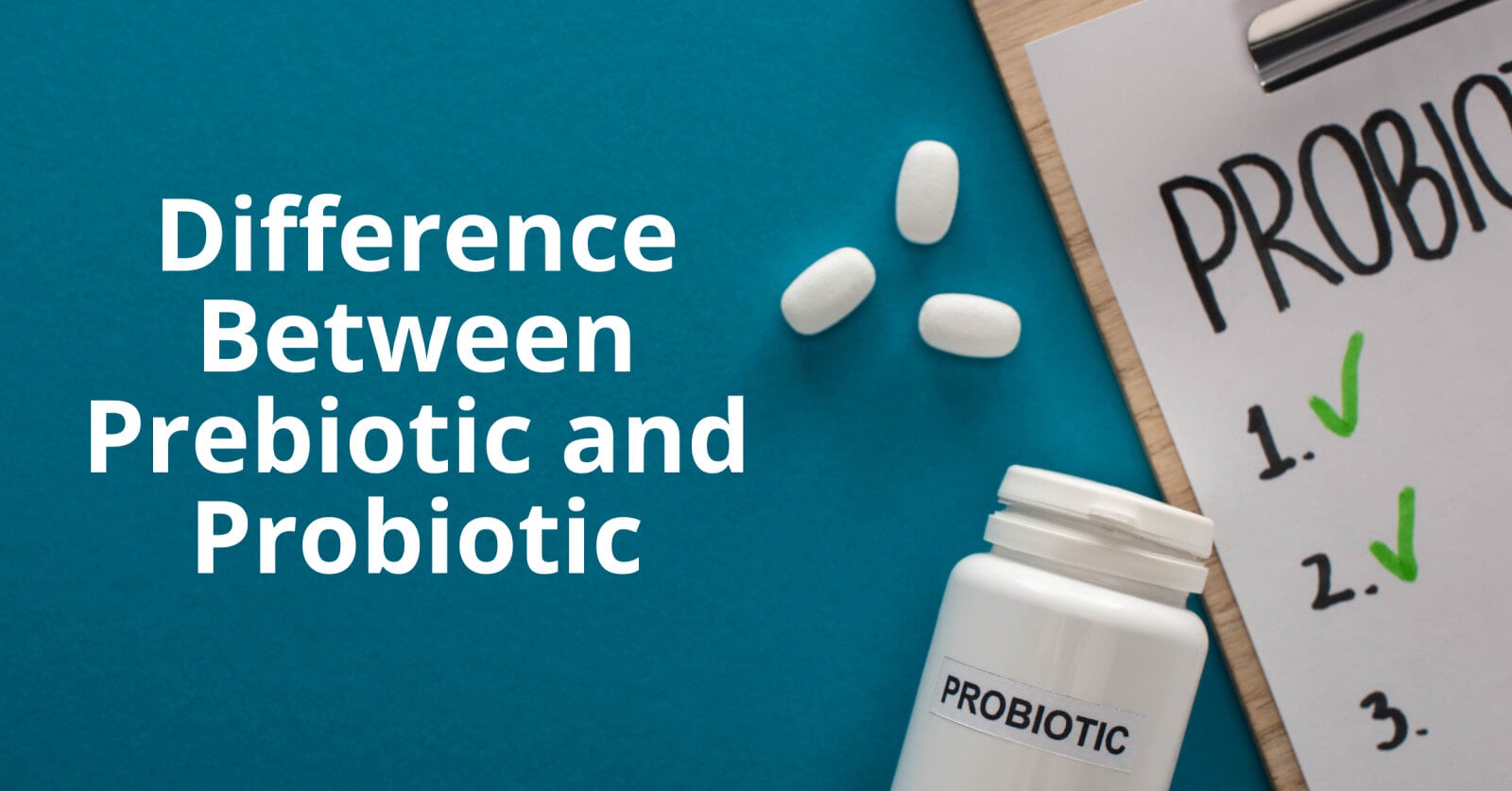- What is the Difference Between Prebiotic and Probiotic?
- What is the Difference Between Prebiotic and Probiotic?
- The Distinct Roles of Prebiotic and Probiotic:
- Here are some signs that you may need to increase your intake of prebiotics and probiotics
- The benefits of increasing prebiotic and probiotic intake are many and varied.
- Here is a table listing the best sources of probiotics and the best times to take them:
- Best sources of prebiotics and the best times to take them:
- Key Differences Between Prebiotic and Probiotic:
- FAQs – Frequently Asked Questions:
- Q: Are prebiotic and probiotic the same thing?
- Q: Can I get enough prebiotics from my diet alone?
- Q: Are all probiotics the same, or do they vary in effectiveness?
- Q: Should I take prebiotics and probiotics together for better gut health?
- Q: Are there any side effects of consuming prebiotics and probiotics?
- Q: Can I take probiotics if I’m on antibiotics?
- Conclusion:
What is the Difference Between Prebiotic and Probiotic?
In the world of gut health and nutrition, two terms often come up: prebiotic and probiotic. Both play crucial roles in maintaining a healthy gut, but they are not the same thing. This article aims to demystify the differences between prebiotic and probiotic, helping you understand how they work and their respective benefits. So, let’s delve into the fascinating world of gut health and explore the unique properties of prebiotics and probiotics.
What is the Difference Between Prebiotic and Probiotic?
Prebiotic and Probiotic Defined: Before we explore the differences, let’s clarify what prebiotic and probiotic mean.
Prebiotic:
A prebiotic is a type of nondigestible fiber that serves as food for beneficial gut bacteria. It provides nourishment to these friendly bacteria, allowing them to thrive and improve gut health. Prebiotics are typically found in various plant-based foods, such as bananas, garlic, onions, and whole grains.
Prebiotics are non-digestible fibers that are found in certain foods, such as fruits, vegetables, and whole grains. Prebiotics are not absorbed by the body, but they are fermented by the good bacteria in your gut. This fermentation process produces short-chain fatty acids, which have a number of health benefits, including:
- Promoting the growth of beneficial bacteria
- Reducing the number of harmful bacteria
- Improving digestion
- Boosting the immune system
- Reducing the risk of some chronic diseases
Probiotic:
On the other hand, a probiotic refers to live microorganisms, primarily beneficial bacteria and some yeasts, that confer health benefits when consumed in adequate amounts. Probiotics can be found in fermented foods like yogurt, kefir, kimchi, and certain dietary supplements.
Probiotics are live bacteria that are similar to the good bacteria that naturally live in your gut. They can be found in foods like yogurt, sauerkraut, and kimchi, or in dietary supplements. Probiotics can help to improve gut health by:
- Increasing the number of beneficial bacteria in your gut
- Promoting the growth of healthy bacteria
- Reducing the number of harmful bacteria
- Improving digestion
- Boosting the immune system
The Distinct Roles of Prebiotic and Probiotic:
The Role of Prebiotics:
- Nourishing the Gut Microbiota: Prebiotics act as a source of nourishment for the beneficial bacteria in your gut, stimulating their growth and activity.
- Supporting Digestive Health: By promoting the growth of healthy gut bacteria, prebiotics aid in maintaining a balanced digestive system, reducing the risk of digestive disorders.
- Boosting Immune Function: A healthy gut microbiota contributes to a robust immune system, and prebiotics play a role in supporting this crucial function.
The Role of Probiotics:
- Restoring Gut Balance: Probiotics can help restore the balance of gut bacteria, especially after disruptions caused by illness, antibiotic use, or poor diet choices.
- Improving Digestion: Certain strains of probiotics have been shown to alleviate symptoms of digestive issues like irritable bowel syndrome (IBS) and bloating.
- Enhancing Nutrient Absorption: Probiotics assist in the breakdown of certain foods, making nutrients more accessible for absorption.
Here are some signs that you may need to increase your intake of prebiotics and probiotics
- Digestive problems, such as constipation, bloating, and gas
- Irritable bowel syndrome (IBS)
- Food allergies or sensitivities
- A weakened immune system
- Chronic diseases, such as heart disease, diabetes, and obesity
The benefits of increasing prebiotic and probiotic intake are many and varied.
Some of the potential benefits include:
- Improved digestion: Prebiotics and probiotics can help to improve digestion by breaking down food and promoting the growth of beneficial bacteria in the gut. This can help to reduce symptoms of constipation, bloating, and gas.
- Boosted immune system: Prebiotics and probiotics can help to boost the immune system by stimulating the production of white blood cells and antibodies. This can help to protect against infection.
- Prebiotics and probiotics can reduce the risk of allergies and sensitivities by promoting the growth of helpful gut bacteria.
- Improved skin health: Prebiotics and probiotics may help to improve skin health by reducing inflammation and promoting the growth of healthy skin bacteria.
- Improved mental health: Prebiotics and probiotics may help to improve mental health by reducing stress, anxiety, and depression.
- Reduced risk of chronic diseases: Prebiotics and probiotics may help to reduce the risk of chronic diseases such as heart disease, diabetes, and obesity.
Here is a table listing the best sources of probiotics and the best times to take them:
| Food | Probiotic strain | Best time to take |
|---|---|---|
| Yogurt | Lactobacillus acidophilus, Bifidobacterium bifidum | First thing in the morning, or 2-3 hours after your last meal |
| Kefir | Lactobacillus acidophilus, Bifidobacterium bifidum, Streptococcus thermophilus | First thing in the morning, or 2-3 hours after your last meal |
| Kombucha | Lactobacillus acidophilus, Bifidobacterium bifidum, Streptococcus thermophilus | First thing in the morning, or 2-3 hours after your last meal |
| Sauerkraut | Lactobacillus plantarum, Leuconostoc mesenteroides, Pediococcus acidilactici | First thing in the morning, or 2-3 hours after your last meal |
| Kimchi | Lactobacillus plantarum, Leuconostoc mesenteroides, Pediococcus acidilactici | First thing in the morning, or 2-3 hours after your last meal |
| Tempeh | Lactobacillus acidophilus, Bifidobacterium bifidum | First thing in the morning, or 2-3 hours after your last meal |
| Miso | Lactobacillus acidophilus, Bifidobacterium bifidum | First thing in the morning, or 2-3 hours after your last meal |
| Probiotic supplements | Lactobacillus acidophilus, Bifidobacterium bifidum, Streptococcus thermophilus | As directed on the label |
Best sources of prebiotics and the best times to take them:
| Food | Prebiotic | Best time to take |
|---|---|---|
| Bananas | Inulin | Anytime of the day |
| Onions | Fructo-oligosaccharides | Anytime of the day |
| Garlic | Fructo-oligosaccharides | Anytime of the day |
| Asparagus | Inulin | Anytime of the day |
| Jerusalem artichokes | Inulin | Anytime of the day |
| Leeks | Fructo-oligosaccharides | Anytime of the day |
| Whole grains | Beta-glucans | Anytime of the day |
| Oats | Beta-glucans | Anytime of the day |
| Barley | Beta-glucans | Anytime of the day |
Key Differences Between Prebiotic and Probiotic:
Source:
- Prebiotics are types of fiber found in specific foods, including fruits, vegetables, and whole grains.
- Probiotics, on the other hand, are live microorganisms found in fermented foods or dietary supplements.
Function:
- Prebiotics serve as food for beneficial gut bacteria, nourishing and stimulating their growth.
- Probiotics are live microorganisms that actively confer health benefits to the host when consumed in adequate amounts.
Nature:
- Prebiotics are non-living, non-digestible fibers.
- Probiotics are living microorganisms.
Delivery:
- Prebiotics are not affected by heat or cold and remain effective during cooking and food processing.
- Probiotics are sensitive to heat, and some may not survive cooking or processing.
Consumption:
- Prebiotics are not affected by factors like stomach acid or digestive enzymes and reach the colon mostly intact.
- Probiotics need to survive the harsh acidic environment of the stomach to reach the intestines alive and deliver their benefits.
FAQs – Frequently Asked Questions:
Q: Are prebiotic and probiotic the same thing?
A: No, they are not. Prebiotics are fiber-based compounds that provide nourishment to beneficial gut bacteria, while probiotics are live microorganisms that offer various health benefits when consumed.
Q: Can I get enough prebiotics from my diet alone?
A: Yes, you can obtain prebiotics naturally from foods like bananas, onions, garlic, asparagus, and whole grains. However, some people opt for prebiotic supplements to ensure an adequate intake.
Q: Are all probiotics the same, or do they vary in effectiveness?
A: Probiotics comprise various strains, and their effectiveness can vary based on the specific health condition being targeted. Different strains have different benefits.
Q: Should I take prebiotics and probiotics together for better gut health?
A: Yes, combining prebiotics and probiotics can have a synergistic effect on gut health. Prebiotics provide nourishment for the probiotics, promoting their growth and effectiveness.
Q: Are there any side effects of consuming prebiotics and probiotics?
A: Prebiotics are generally safe, but consuming large amounts may cause digestive discomfort. Probiotics may lead to mild gastrointestinal issues in some individuals, but these usually subside with continued use.
Q: Can I take probiotics if I’m on antibiotics?
A: Yes, taking probiotics while on antibiotics can help reduce the disruption of gut bacteria caused by the medication. However, it’s essential to space out the doses to avoid interference.
Conclusion:
Understanding the difference between prebiotic and probiotic is essential for optimizing gut health and overall well-being. Prebiotics provide nourishment for beneficial gut bacteria, while probiotics introduce live microorganisms that offer various health benefits. By incorporating prebiotic-rich foods and probiotic supplements into your diet, you can support your gut microbiota and promote digestive health. Remember to consult your healthcare provider before starting any new supplements, especially if you have underlying health conditions.
By prioritizing the well-being of your gut and being knowledgeable about your choices, you can embark on an extraordinary journey towards improved health and limitless energy.
























